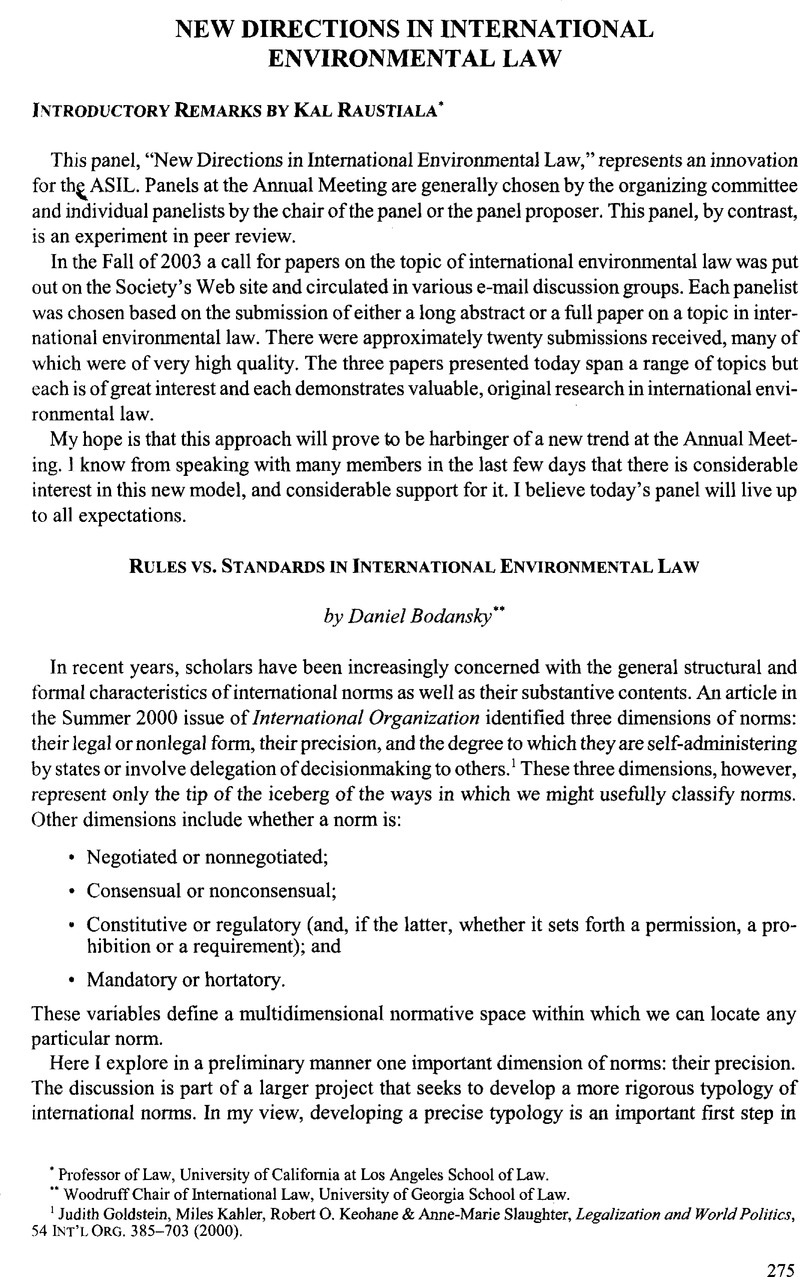Article contents
Rules vs. Standards in International Environmental Law
Published online by Cambridge University Press: 28 February 2017
Abstract

- Type
- New Directions in International Environmental Law
- Information
- Copyright
- Copyright © American Society of International Law 2004
References
1 Goldstein, Judith, Kahler, Miles, Keohane, Robert O. & Slaughter, Anne-Marie, Legalization and World Politics, 54 Int’l Org. 385–703 (2000)CrossRefGoogle Scholar.
2 Kaplow, Louis, Rules Versus Standards: An Economic Analysis, 42 Duke L. J. 557 (1992-1993)CrossRefGoogle Scholar.
3 Ronald Dworkin, Taking Rights Seriously 22-28 (1977).
4 The effectiveness factor could cut in either direction. Presumably, states prefer norms that they believe will be effective if their primary concern is compliance by others and prefer norms that will be less effective if their primary concern is preserving their own freedom of action.
5 Thomas M. Franck, The Power of Legitimacy Among Nations 50-66 (1990).
6 Abram & Antonia H. Chayes, The New Sovereignty: Compliance with International Regulatory Agreements (1995).
7 Abbott, Kenneth W. and Snidai, Duncan, Hard and Soft Law in International Governance, 54 Int’l Org. 421, 427 (2000)CrossRefGoogle Scholar.
8 Korobkin, Russell B., Behavioral Analysis and Legal Form: Rules vs. Standards Revisited, 79 Or. L. Rev. 23 (2000)Google Scholar. This is presumably why the basic norms of international humanitarian law take the form of broad standards—for example, proportionality and necessity—rather than precise rules.
9 Abbott & Snidai, supra note 7.
10 Ratner, Steven, Precommitment Theory and International Law: Starting a Conversation, 81 Tex. L. Rev. 2055 (2003)Google Scholar.
11 Sunstein, Cass R., Problems with Rules, 83 Cal. L. Rev. 953, 964 (1995)CrossRefGoogle Scholar.
- 3
- Cited by




